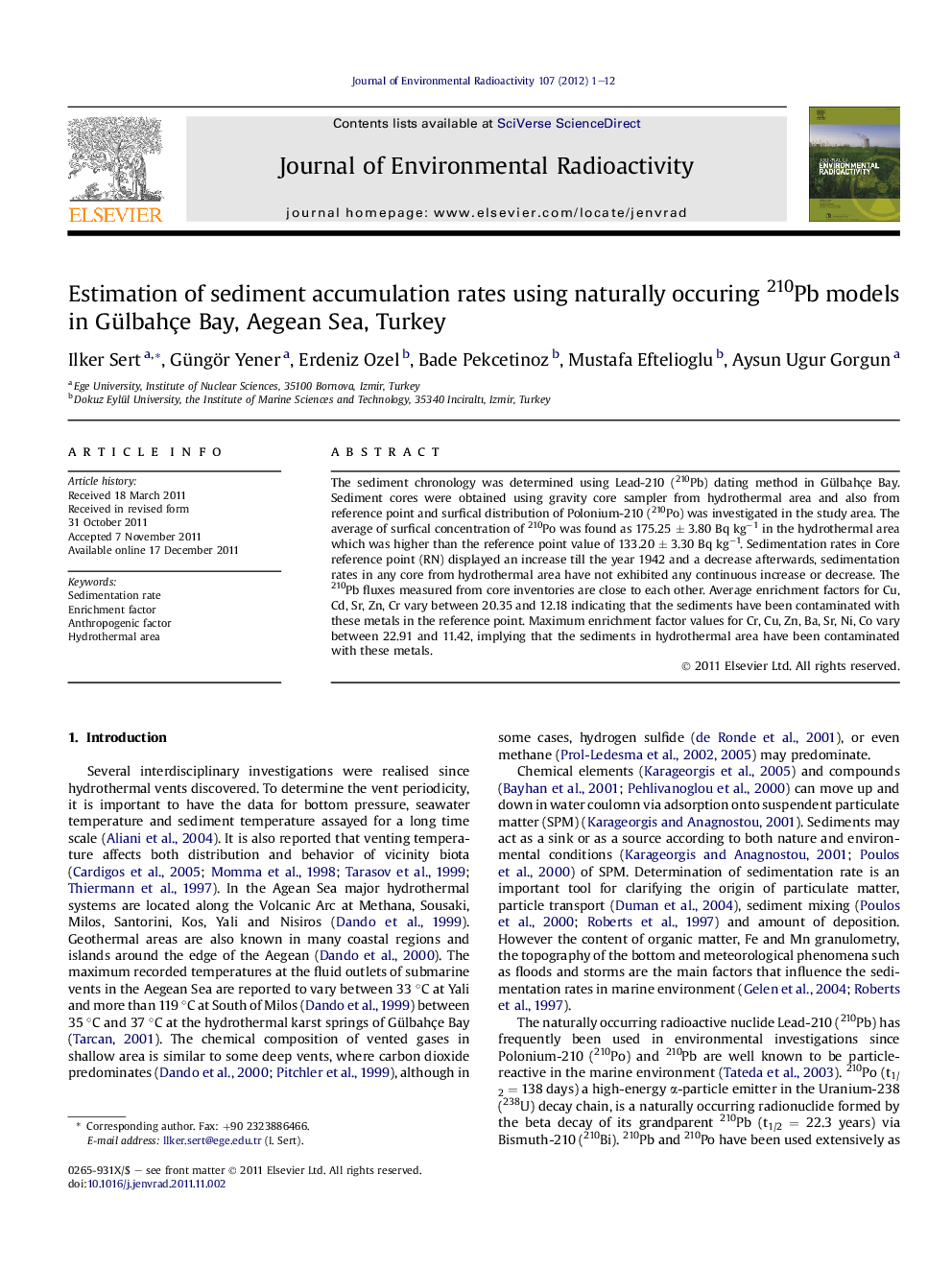| Article ID | Journal | Published Year | Pages | File Type |
|---|---|---|---|---|
| 1738386 | Journal of Environmental Radioactivity | 2012 | 12 Pages |
The sediment chronology was determined using Lead-210 (210Pb) dating method in Gülbahçe Bay. Sediment cores were obtained using gravity core sampler from hydrothermal area and also from reference point and surfical distribution of Polonium-210 (210Po) was investigated in the study area. The average of surfical concentration of 210Po was found as 175.25 ± 3.80 Bq kg−1 in the hydrothermal area which was higher than the reference point value of 133.20 ± 3.30 Bq kg−1. Sedimentation rates in Core reference point (RN) displayed an increase till the year 1942 and a decrease afterwards, sedimentation rates in any core from hydrothermal area have not exhibited any continuous increase or decrease. The 210Pb fluxes measured from core inventories are close to each other. Average enrichment factors for Cu, Cd, Sr, Zn, Cr vary between 20.35 and 12.18 indicating that the sediments have been contaminated with these metals in the reference point. Maximum enrichment factor values for Cr, Cu, Zn, Ba, Sr, Ni, Co vary between 22.91 and 11.42, implying that the sediments in hydrothermal area have been contaminated with these metals.
► There is not difference of 210Pb activities between reference and hydrothermal areas. ► Average sedimentation rate in hydrothermal area is higher than the reference one. ► CRS, CIC models are useable in calculation of sedimentation rate rather than CF; CS. ► Reference point sediments have an enrichment on biological affiliation. ► Hydrothermal area sediments have lithogenous components.
